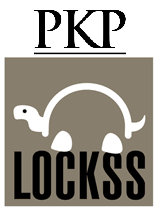Historiography today: changes in the historian-source relationship
DOI:
https://doi.org/10.51743/cpe.47Keywords:
Historiography, Sources, Autoreferencia, Methodology IndividualismAbstract
In recent years we have witnessed the collapse of the objectivist paradigms that underpin the dominant historiographical schools: Annales, Marxist historiography or the British liberal historiography. We have followed a multitude of ways and guidelines that have relocated to the fore the central question of whether it is possible to achieve objective knowledge about the past, society, the processes of change. This paper attempts to analyze the figure of the historian who, in interpreting the past, is aware that his interpretation of historicity is also affected, which would discharge any responsibility, since no interpretation can ever aspire to universal validity, but, referring to actions of the subject constructed by another subject, is always provisional, exposed to criticism of the new generations will undoubtedly look with new eyes the past.
Downloads
Global Statistics ℹ️
|
373
Views
|
251
Downloads
|
|
624
Total
|
|
References
I. OLÁBARRI GORTÁZAR: “La ‘Nueva Historia’, una estructura de larga duración”, enJ. ANDRÉS-GALLEGO (dir.): New History, nouvelle histoire: hacia una nueva historia. Madrid, Actas, 1993, pp. 29-81.
P. BURKE: “Historia cultural e historia total”, en I. OLÁBARRI y F.J. CASPISTEGUI (dirs.), La “nueva” historia cultural”, Madrid, editorial Complutense, 1996, pp. 115-122.
N. Z. DAVIS: “Las formas de la Historia social”, en Historia Social, 10 (1991), pp. 177-182.
J. ANDRÉS-GALLEGO: “La revolución historiográfica de los tiempos modernos”, en VV.AA.: Historia general de España y América, t. VIII, La crisis de la hegemonía española, Madrid, Rialp, 1986, p. XXII.
CL. GEERTZ, J. CLIFFORD (et al.): El surgimiento de la antropología posmoderna. Barcelona, Gedisa, 1991. Véase L. STONE: “History and Postmodernism”, en Past and Present, 131 (1991).
M. A. BEL BRAVO, La familia en la Historia, Madrid, Encuentro, 2000. La primera parte del libro, pp. 23-42, es fundamentalmente historiográfica.
J. SCHUMPETER: Historia del análisis económico. Barcelona, Ariel, 1971 (original de 1954), p. 497.
Actas en dos volúmenes: Córdoba, Universidad de Córdoba, 1999. La ponencia de KAMEN, y la también interesante de T. F. RUIZ, en el vol. I, pp. 315-344.
R. CHARTIER, “La historia hoy en día: dudas, desafíos, propuestas”, en La nueva historia cultura: la influencia del postestructuralismo y el auge de la interdisciplinariedad. Dir. I. OLÁBARRI y F. J. CASPISTEGUI. Ed Complutense. Madrid, 1996, pp. 21-22.
Conjeturas sobre un sable. Barcelona, Anagrama, 1986.
P. RICOEUR en su obra Historia y narratividad, Paidós, Barcelona, 1999 lo estudia con detenimiento. Véanse las páginas 73-81.
J. ANDRÉS GALLEGO: Recreación del Humanismo, desde la Historia, Madrid, Actas, 1993.
B. BAILYN: “The Challenge of Modern Historiography”, American Historical Review, 87 (1982), pp. 1-24. DOI: https://doi.org/10.2307/1863306
La historia hoy en día: dudas, desafíos, propuestas”, en La “nueva” historia cultural: la influencia del postestructuralismo y el auge de la interdisciplinariedad. Dir. I. OLÁBARRI y F. J. CASPISTEGUI. Ed Complutense. Madrid, 1996.
En Formas de hacer Historia. Alianza, Madrid, 2003.
M. A. BEL BRAVO: “El mundo social de Rinconete y Cortadillo”, en Studia Aurea. Actas del III Congreso de la AISO, III (Tolouse-Pamplona, 1996), pp. 45-53.
G. GÓMEZ-FERRER MORANT: Palacio Valdés y el mundo social de la Restauración. Oviedo, 1983.
. A. BEL BRAVO y M. L. LÓPEZ MUÑOZ: “Vida y sociedad en la España del siglo XVII a través del ‘Coloquio de los perros’ de Cervantes”, en Anales Cervantinos, XXIX (Madrid, 1991), pp. 125-166. DOI: https://doi.org/10.3989/anacervantinos.1991.416
M. A. BEL BRAVO: “Un ejemplo de historia a través de la literatura: La Gitanilla”, en Guadalbullón, V-7 (Jaén, 1992), pp. 5-19.
W. A. IGGERS: Leopold von Ranke. Nueva YorK, 1973, pag. 33.
MAGRIS, C. "El Danubio". Editorial Anagrama en Barcelona, 2004.
C. MAGRIS: Utopía y desencanto. Barcelona, Anagrama, 2001, p. 63.
F. R. ANKERSMIT: “La verdad en la Historia y la Literatura” en op. cit. p. 58.
Downloads
Published
How to Cite
Issue
Section
License
The author reserves the rights (copyright) of the published works, and the journal encourages and allows their reuse, from the preprint. The works are published in the electronic edition of the journal under a license "Creative Commons Attribution / Attribution-NonCommercial 4.0 International Public License - CC BY-NC 4.0", and can be copied, used, disseminated, transmitted and publicly exhibited.
The author / s partially transfer the property rights (copyright) of this work for the printed and online editions, provided that:
- The authorship and original source of its publication (magazine, publisher and URL of the work) is cited.
- Are not used for commercial purposes.
- The existence and specifications of this user license are mentioned.
It also declares to have respected the ethical principles of research and to be free from any conflict of interest.
"C.P.E." encourages the authors and the scientific community to the maximum promotion and dissemination of the works in their final version through:
1) Your list of contacts (emails) and social networks (Facebook, Twitter, LinkedIn ...).
2) Institutional repository of your University and public repositories (Mendeley, Cosis ...).
3) Scientific social networks (ResearchGate, Academia.edu, Kudos ...).
4) Personal or institutional website, blog, etc.
5) Google Scholar, ORCID, ResearchID, ScopusID, Dimensions, PlumX ...
6) Printed copies purchased directly and sent to specialists for reading and subsequent citation if appropriate.




















1.png)
1.png)

1.png)





.png)
.png)

.png)
1.png)
1.png)
